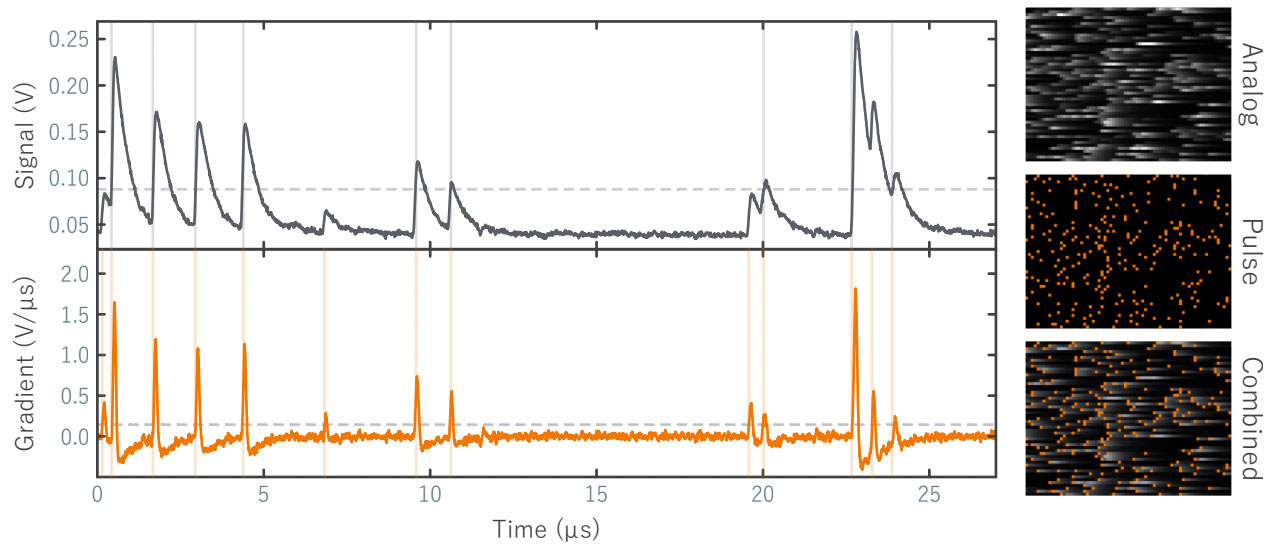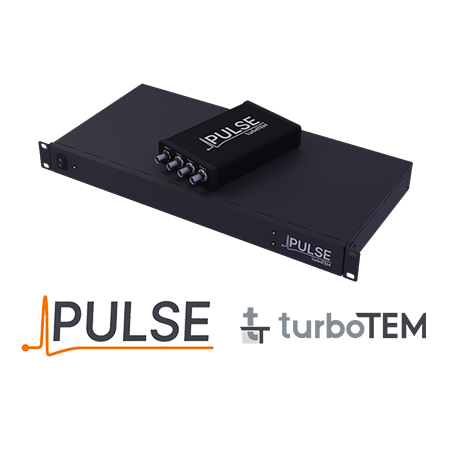ID-04420PULSE
PULSE STEM Digital Processor (2ch)
ID-04440PULSE
PULSE STEM Digital Processor (4ch)
The Pulse system is a modular and retrofittable upgrade to improve the speed and precision of scanning transmission electron microscopy signals. At its core, it streams the analog signal from an electron detector, including those using scintillator based technology, identifies individual electron events and returns a fully digital output. The result is images with calibrated units of individual electrons with a true zero background level and pure Poisson noise.
Features
Connects to any acquisition system accepting TTL digital inputs.
Produces quantifiable images with true zero dark level and pure Poisson noise.
Acts alongside existing detectors for simultaneous acquisition of images, including spectroscopy.
Features two channels for electron counting on two separate detectors.
Specifications
| 2 Channel | 4 Channel | ||
|---|---|---|---|
| No. channels | 2 in, 2 out | 4 in, 4 out | |
| Connections | BNC | ||
| Input range | Max. ±10 V | ||
| Input resolution | 14-bit | ||
| Input impedance | 50 Ω | ||
| Sample rate | 125 Msps (per channel) | ||
| Output voltage | 3.3 V CMOS, 5 V TTL | ||
| Output frequency | Output frequency | ||
| Power | 5 V (USB-C or barrel jack) | ||
| Control interface | RJ45 ethernet | ||
Gallery

Raw data stream from a scintillator detector (top) and differentiated signal (bottom). Horizontal dashed line shows an example threshold with vertical lines showing detected electrons. Right shows high-speed, low-dose images from analog and Pulse detection, showing improved temporal response when using Pulse.

Low magnification image of a FIB lamella acquired using the analog (left) and Pulse (right) signals. Slow streaking into the vacuum can be observed in the analog signal.
Are you a medical professional or personnel engaged in medical care?
No
Please be reminded that these pages are not intended to provide the general public with information about the products.

